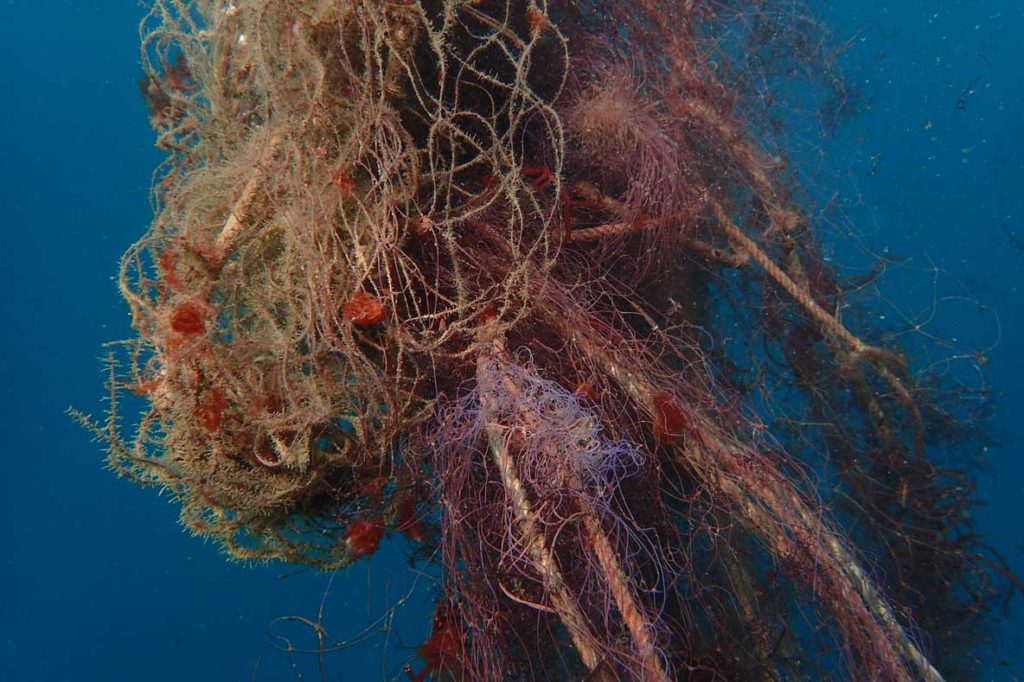
Ghost nets are fishing gear which have been abandoned, discarded or lost at sea. They keep fishing and killing marine creatures passively as they drift with the ocean currents. Human intervention is the only way to remove these ghost nets; the majority of fishing nets produced are made from plastic, which takes hundreds of years to break down.
So far, the Olive Ridley Project Pakistan has removed 4 tons of ghost gear from the sea, shores, and beaches near Karachi and the fishing village of Abdul Rehman Goth. But now we have a new problem: What to do with 4 tons of ghost nets?
Ghost Net Re-Use
The ability to re-use and re-purpose ghost nets depends on what type of fishing net we have recovered. In the area around Karachi and Abdul Rehman Goth, the fishers use mainly three kinds of fishing nets. The most common net type is monofilament nets. These are made from thin, single plastic threads. They are breakable, cheap, and high in numbers. Consequently, we recover a lot of these nets.
The second net type is made of nylon and used in trawler (gujju) nets. These are big nets that can extend all the way to the sea bed. 25% of the nets ORP has recovered in Pakistan are nylon nets.
The third net type is nets made from clothing fibers. These nets are used to catch lobsters, crabs and other crustaceans, and make up 15% of the nets that we have recovered. Yes, they are biodegradable, but they still entangle a lot of trash and marine life and need to be removed.
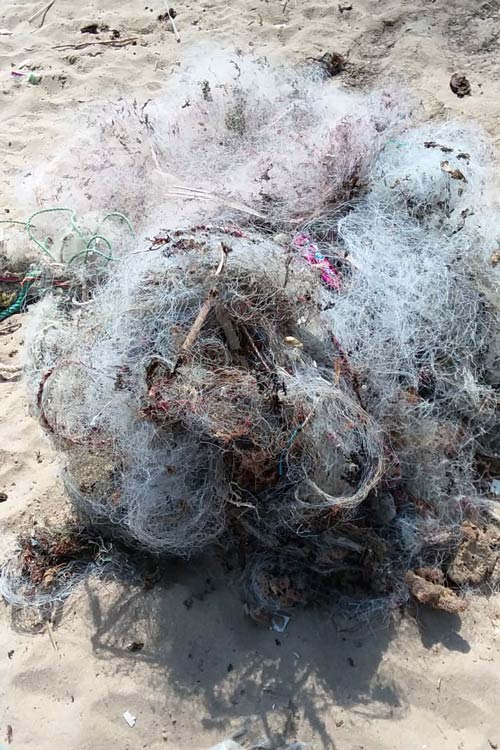
Thanks to some creative thinking and innovative collaborations, we are now putting ghost nets to good use in various and surprising fields. So far ghost nets have found new life in fashion, animal welfare, and construction!
Ghost Gear in Fashion
In the hands of fashion designer Waqar J. Khan, ghost nets became necklaces and linings on fashionable shirts.
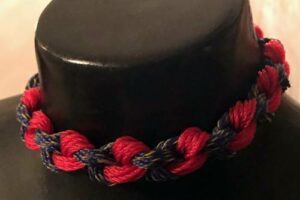
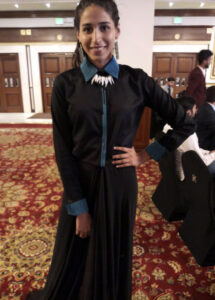
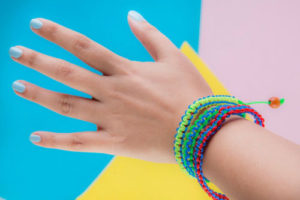
Dr Seher Mirza, a PhD in constructive textiles and craft community development, created bracelets from ghost nets. She taught the women of Abdul Rehman Goth, who now sell bracelets to earn extra for their households. Buy your’s here!
Ghost Gear Donkey Harnesses
Ayesha Chundrigar Foundation (ACF) is an animal rescue organisation which provide shelter, food, and medical treatment for injured animals like dogs, cats, donkeys, horses and some birds. They contacted ORP after watching our video about the plastic bottle hut we built (see below) and wanted to get a similar structure made at their shelter.
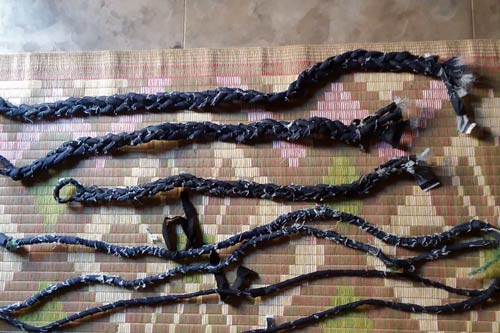
Olive Ridley Project’s collaboration with ACF has opened up new avenues for ghost gear utilization: ACF is turning monofilament ghost nets into donkey harnesses. Donkey owners in Pakistan use leather-based harnesses for their animals. However, the leather causes friction which leads to injuries to the donkeys. The injuries can be severe; they cause the donkeys a lot of pain and can even incapacitate them.
To create a softer medium and remove the friction burns caused by the leather, ACF uses ghost nets to make the base for the donkey harnesses. They then cover the ghost net base with denim cloth. The denim causes less friction, the donkey is healthy, and the donkey owner is happy! As a bonus, any worn out denim cloth can easily be replaced, and the underlying ghost net base can be used again and again.
Ghost Gear Dog Leashes
ACF also reached out to their network to create the perfect product for dog owners: A dog leash made from ghost gear, decorated with colourful threads. It has turned into quite a hit in the market!
More importantly, one dog leash uses up 880 square feet (82 square meters) of monofilament ghost net! The net is cut into a 44 x 20 feet (13.5 x 8.5 meters) piece and wound up into a rope like structure. It is then covered up with cloth to make it easy to handle.
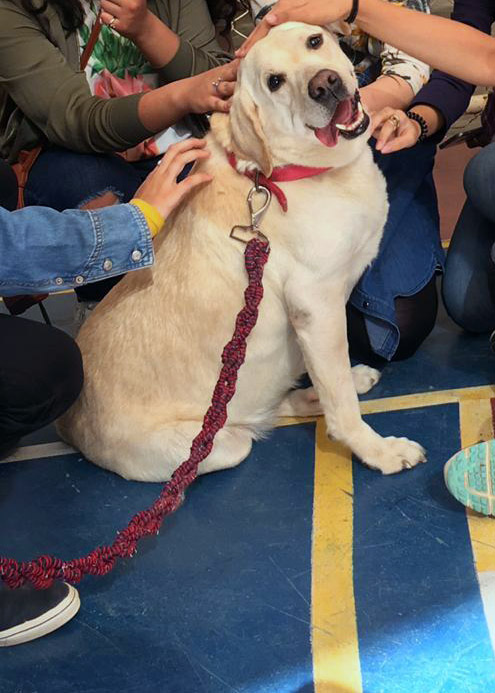
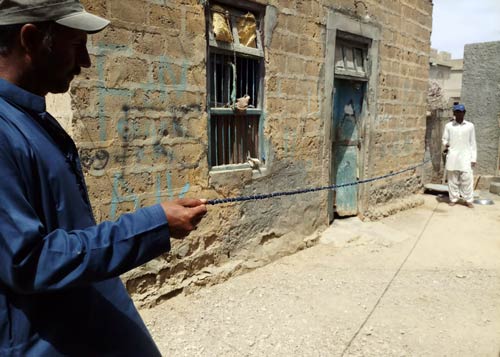
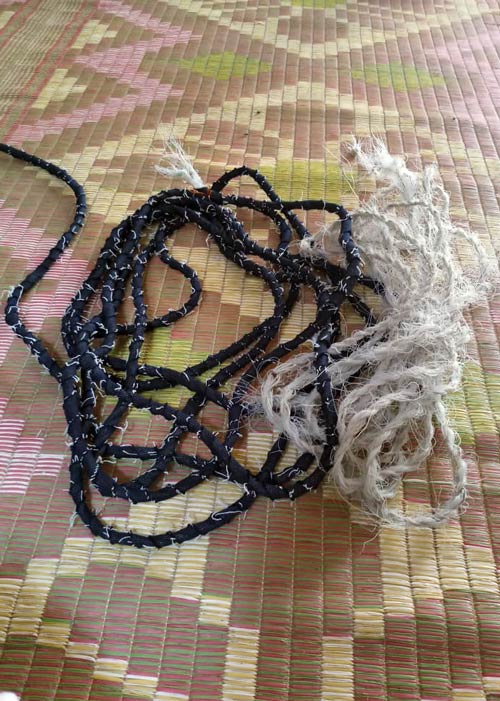
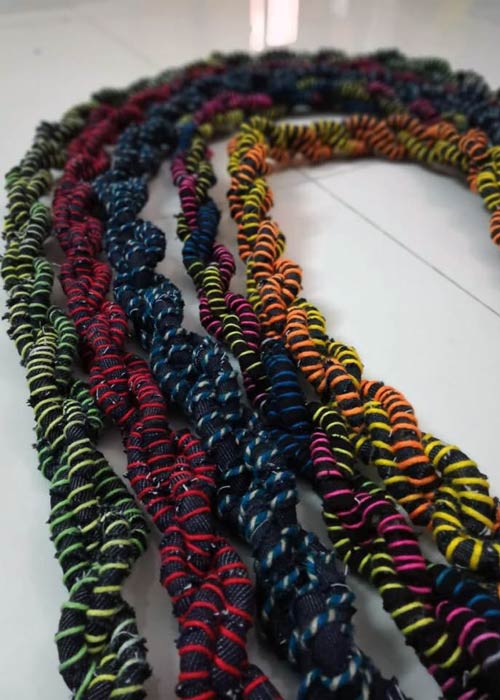
Ghost Net In Construction
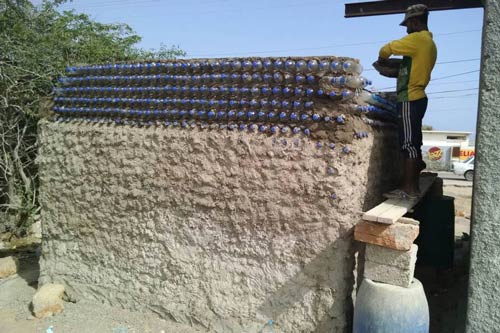
Another unique use of ghost net, tested out in Abdul Rehman Goth, is to use it in construction. The Olive Ridley Project team built a hut from 3600 plastic bottles filled with sand and sea water, and held together with monofilament ghost net. Finally, cement is used as a binding agent to give the structure a more solid feel.
The plastic bottle hut is currently storing some of the tons of ghost nets we have recovered.
Ghost Nets Goals
Finding new ways to re-use ghost gear depends on the experience and innovative thinking of people from different sectors of economy. A fashion designer uses it in their designs; an animal rescue shelter uses it to better the lives of animals; builders use it in construction. With more and more people thinking about how to reduce the impact of ghost gear, we have hope that together we can remove this menace from the environment.

